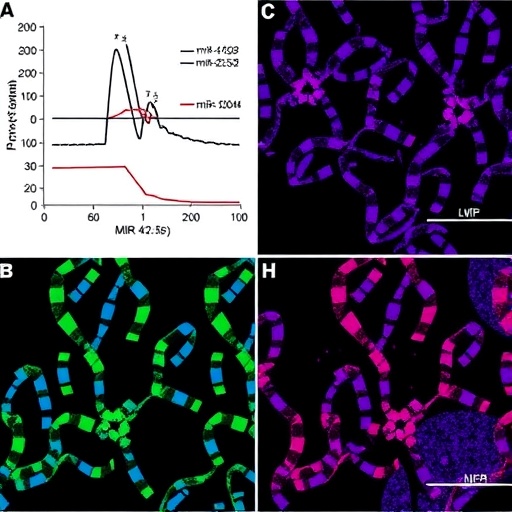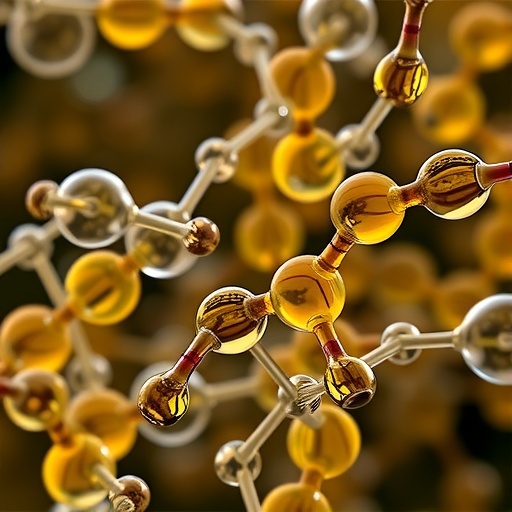PROTECT YOUR DNA WITH QUANTUM TECHNOLOGY
Orgo-Life the new way to the future Advertising by AdpathwayIn a groundbreaking study that has the potential to reshape our understanding of bacterial colonization in the human body, researchers have focused on a particular group of bacteria known as Streptococcus anginosus. Traditionally viewed merely as opportunistic pathogens, the implications of these bacteria within the urogenital tract reveal a far more intricate relationship between bacteria and their human hosts than previously assumed. The emergence of this research sheds new light on the complex dynamics of bacterial communities, especially focusing on their behavior across different anatomical sites in the same individuals.
The team, led by researchers Appleberry, Garcia-Israel, and Boger, conducted an in-depth analysis of Streptococcus anginosus samples retrieved from the urogenital tract. Their work underscores the significance of studying bacterial populations not just in isolation but in the context of their natural environments in the human body. What sets this research apart is its rigorous methodology, which employed advanced genomic sequencing techniques to track specific strains of the bacteria. This approach permitted the researchers to paint a highly detailed picture of the prevalence and distribution of these bacterial strains.
One of the notable aspects of the study is the evidence indicating that the same strain of Streptococcus anginosus was found across various anatomical sites within the same female subjects. This challenges previously held notions which suggested that different environments within the body would harbor distinct bacterial strains. Instead, the findings suggest a potential stability and persistence of certain bacterial strains across various niches within the urogenital tract, hinting at the adaptive capabilities of these bacteria to thrive in diverse environments.
The implications of this discovery reach beyond mere academic interest. Understanding the behavior and distribution of Streptococcus anginosus within the human microbiome opens up new avenues for exploring the impacts of these bacteria on women’s health. For instance, as Streptococcus anginosus has been implicated in various urogenital infections, a deeper knowledge of how these bacteria operate in different anatomical contexts could inform more targeted treatment options. It suggests that diagnostic approaches may need to consider the strain-specific characteristics inherent to the individual rather than relying on generic methods of identification.
Furthermore, the study serves as a crucial reminder of the need for precision medicine in addressing conditions that may initially seem to stem from a common pathogen. If a specific strain of Streptococcus anginosus can be traced back to multiple sites within the same individual, discussions regarding antibiotic resistance and treatment efficacy could shift dramatically. Conventional treatments may need to evolve as we gain insight into the unique ecology of the urogenital microbiome and the role of these bacteria within it.
The research also highlights the potential for Streptococcus anginosus beyond its pathogenic reputation. As a member of the oral cavity and the urogenital flora, its presence could also suggest a symbiotic relationship in certain environments, contributing to the overall balance of microbial inhabitants. Further studies can delve into the benefits these strains may confer or the conditions that promote their growth, leading to a more nuanced understanding of microbial ecology.
In addition, the researchers noted the significance of environmental factors that may influence the distribution of Streptococcus anginosus. Factors such as diet, hormonal fluctuations, and even lifestyle choices could play a critical role in shaping the microbial landscape of the urogenital tract. This insight necessitates a more holistic approach to studying human microbiota, one that takes into account external lifestyle influences as well as inherent biological factors.
The emergent theme from the research reinforces the principle that bacteria are not simply adversaries to be eradicated, but increasingly seen as integral components of our health. As the misconceptions around bacteria continue to dissolve, the importance of targeted research becomes ever more evident. The dual focus on both pathogenic and non-pathogenic strains could pave the way for novel therapeutic strategies that leverage beneficial microorganisms.
Moreover, this novel exploration of Streptococcus anginosus calls for a reexamination of genetic diversity within microbial populations. The genomic insights gained provide an invaluable framework for future studies aimed at discerning how these bacteria interact with each other and with their host. Advances in genomic technologies can be harnessed to further understand the genetic mechanics that facilitate their survival and adaptation to varied environments within the body.
This research does not merely shine a spotlight on Streptococcus anginosus but also reflects the broader paradigm shift in microbiome research itself. The increasing recognition of the human microbiome as a critical element of health has transformed conventional medical practices and diagnostic techniques. As scientists continue to uncover the complexities of this invisible ecosystem within us, the clinical implications will be profound, potentially leading to better health outcomes through personalized medicine.
In conclusion, this pioneering study on Streptococcus anginosus urges a reconceptualization of our engagement with microbial allies nestled within our bodies. By thorough investigation and advanced genetic analysis, the researchers have unveiled a wealth of information that may influence both the future of microbial research and clinical practices. The findings represent a clarion call for the scientific community to further explore the mutualistic relationships inherent in our microbiome and recognize the delicate balance that sustains human health.
As the exploration of these microbial communities continues, we anticipate that research on Streptococcus anginosus will ignite further studies into its role within the larger context of human health, particularly in understanding its interactions with other microbial strains and host factors. This promising line of inquiry is set to transform our approach to infectious diseases and bolster our arsenal against antibiotic resistance.
The comprehensive insights from the study underscore the necessity for interdisciplinary approaches to fully comprehend the implications of our ever-intricate relationship with microbiota like Streptococcus anginosus. By embracing this complexity, we may ultimately foster improved health practices and disease management strategies that prioritize the richness of our body’s natural ecosystems.
Subject of Research: The dynamics and behavior of Streptococcus anginosus in the urogenital tract.
Article Title: Streptococcus anginosus of the urogenital tract: evidence of the same strain across anatomical sites of the same females.
Article References:
Appleberry, H., Garcia-Israel, J., Boger, L. et al. Streptococcus anginosus of the urogenital tract: evidence of the same strain across anatomical sites of the same females. BMC Genomics 26, 840 (2025). https://doi.org/10.1186/s12864-025-11973-4
Image Credits: AI Generated
DOI: 10.1186/s12864-025-11973-4
Keywords: Streptococcus anginosus, urogenital tract, microbiome, bacterial strains, genomic sequencing, women’s health, microbial ecology, antibiotic resistance.


 13 hours ago
15
13 hours ago
15





















 English (US) ·
English (US) ·  French (CA) ·
French (CA) ·